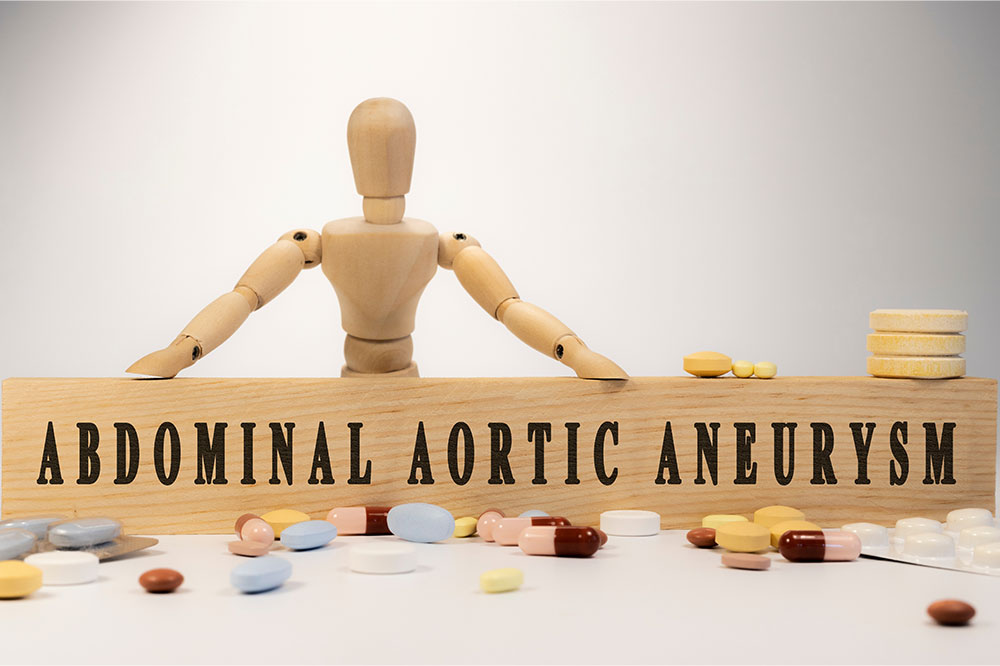
Abdominal Aortic Aneurysm – Causes, signs, diagnosis, and more
An abdominal aortic aneurysm, commonly referred to as the AAA, is a life-threatening health condition. It shows as a bulge in the primary artery that supplies blood to your legs, pelvis, and belly. Aneurysm refers to a vulnerable area in the wall of a blood vessel, which is at a potentially high risk of breaking open or rupturing, resulting in potentially dangerous bleeding or hemorrhage. Some people refer to abdominal aortic aneurysms as stomach aneurysms.
Symptoms
Most people with AAA do not show any symptoms in the initial stage. However, signs may appear if the aneurysm gets bigger or starts to put pressure on the nearby organs. Two of the most prevalent AAA symptoms include discomfort in the abdomen and belly pain. It is constant in some people, while it may come and go in others.
Other abdominal aortic aneurysm symptoms
Pain in the belly, chest, flank, or lower back is experienced. Over time, this pain may spread to the legs, buttocks, or groin. The pain might be throbbing, deep, aching, or gnawing and may last for a few days or hours. In most people, it is not affected by movement. However, some positions may be more uncomfortable than others.
- Pulsating feeling in the belly
- Fever, if the aneurysm is an outcome of inflammation or infection
- Blue or black painful toe or cold food, which happens when an aneurysm causes a blood clot that blocks or breaks off the blood flow to the feet or legs
As is apparent, these symptoms are similar to other problems resulting in belly or chest pain, such as peptic ulcer disease, gastroesophageal reflux disease, and coronary artery disease. But do not ignore it and immediately visit a doctor if the symptoms prolong.
Ruptured aneurysm symptoms
If the aortic aneurysm ruptures or bursts, it may lead to the following symptoms:
- Signs of shock
- An extreme drop in blood pressure
- Severe, sudden pain
If you do not receive immediate treatment, it might rapidly result in death.
Causes
Aortic aneurysms have the potential to develop in any section of the aorta. However, the majority of cases of aortic aneurysms are observed in the abdominal region or the lower end of the aorta. Multiple things may result in the development of AAA. Some of the common AAA causes include:
- Atherosclerosis, or the arteries hardening, happens when fat or other substances build up on the blood vessel’s lining.
- Trauma, for instance, a car accident injury, may also lead to AAA.
- High blood pressure that weakens or damages the aorta’s walls gradually causes the onset of the condition.
- In rare cases, certain fungi or bacteria (Aorta infection) might lead to AAA.
- Blood vessel diseases that inflame them may also be one of the causes of AAA.
Risk factors
Beyond the causes listed above, some risk factors may also aggravate your risk of developing AAA. These include:
- Age
AAA is most prevalent in people 65 or older. - Sex
Men are more prone to developing AAA than women. - Familial link
A family history of AAA aggravates your risk of developing the condition. - Other aneurysm types
The presence of an aneurysm in the aorta of the chest or other significant blood vessels, such as the artery located behind the knee, can increase the likelihood of developing an AAA.
Diagnosis
The doctor performs a physical exam and asks different questions about your health history for diagnosis. Beyond this, they may also conduct the following tests for diagnosis:
- CT scan
It employs computer technology and X-rays to make the body’s axial or horizontal images to show detailed images of any body part. - MRI
This is a combination of radio frequencies, large magnets, and a computer that generates detailed pictures of the structures and organs within the body. - Echocardiogram
It evaluates the heart’s function and structure by employing sound waves recorded on the electronic sensor to form heart valves and the heart’s moving image. In addition, it also makes a picture of the structures within the chest, such as the lungs, areas surrounding the legs, and the chest organs . - Chest X-ray
It employs electromagnetic energy beams to develop pictures of bones, internal tissues, and organs on a film. - Transoesophageal echocardiogram
This test is used to diagnose aneurysm. Doctors insert a probe with a transducer into the throat’s end for this procedure.
Treatment options
The treatment options for AAA may vary depending on its size, location, type, growth rate, and general health.
- Monitoring
Doctors prefer monitoring for AAA less than 5.5 cm wide instead of surgery. - Endovascular surgery
This treatment method is less invasive than open abdominal surgery. It helps stabilize the aorta’s weakened walls. - Open abdominal surgery
This aids in removing the aorta’s damaged areas. It is an invasive surgery with a longer recovery time but is quintessential if the aneurysm has ruptured or is very large.




